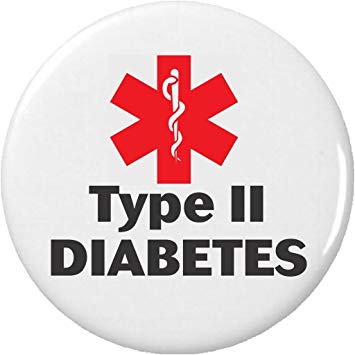Type 2 diabetes happens when your body can’t use insulin the right way. Over time, the pancreas can’t make enough insulin.
Insulin is a hormone that helps the body’s cells use sugar (glucose) for energy. It also helps the body store extra sugar in muscle, fat, and liver cells. Without insulin, this sugar can’t get into your cells to do its work. It stays in your blood instead. Your blood sugar level then gets too high.
 High blood sugar can harm many parts of the body, such as the eyes, heart, blood vessels, nerves, and kidneys. It can also increase your risk for other health problems (complications).
High blood sugar can harm many parts of the body, such as the eyes, heart, blood vessels, nerves, and kidneys. It can also increase your risk for other health problems (complications).
Type 2 diabetes is different from type 1 diabetes. In type 1 diabetes, the body’s immune system destroys the cells that release insulin, so that over time the body can’t produce insulin at all. In type 2 diabetes, the body still makes some insulin, but it can’t use it the right way.
What causes type 2 diabetes?
You can get type 2 diabetes if:
- Your body doesn’t respond as it should to insulin. This makes it hard for your cells to get sugar from the blood for energy. This is called insulin resistance.
- Your pancreas doesn’t make enough insulin.
If you are overweight, get little or no exercise, or have type 2 diabetes in your family, you are more likely to have problems with the way insulin works in your body. Type 2 diabetes can be prevented or delayed with a healthy lifestyle, including staying at a healthy weight, making healthy food choices, and getting regular exercise.
Bariatric Surgery Can Cure Type 2 Diabetes
What are the symptoms of type 2 diabetes ?
Some people don’t have symptoms, especially when diabetes is diagnosed early. This is because the blood sugar level may rise so slowly that a person may not know that anything is wrong.
The most common symptoms of high blood sugar include:
- Feeling very thirsty.
- Urinating more often than usual.
- Feeling very hungry.
- Having a blurred vision.
- Weight loss.
- Fatigue.
- Slow healing sores or frequent infection.
You can get high blood sugar for many reasons, including not taking your diabetes medicines, eating more than usual (especially sweets), not exercising, or being sick or under a lot of stress.
If you’re taking diabetes medicine, you can also have problems with low blood sugar. These symptoms include:
- Sweating.
- Feeling weak.
- Feeling shaky.
- Feeling very hungry.
How is type 2 diabetes diagnosed?
If your doctor thinks that you have type 2 diabetes, he or she will ask you questions about your medical history, do a physical examination, and order a blood test that measures the amount of sugar in your blood.
Are you at risk of developing Type-2 diabetes?
Researchers don’t fully understand why some people develop type 2 diabetes and others don’t. However, certain factors increase the risk, including:
- Weight. The more fatty tissue you have, the more resistant your cells become to insulin.
- Fat distribution. If your body stores fat primarily in your abdomen, your risk of type 2 diabetes is greater than if your body stores fat elsewhere, such as your hips and thighs.
- Inactivity. The less active you are, the greater your risk of type 2 diabetes.
- Family history.If you have a close relative with diabetes – such as a parent, brother or sister.
- Race. If you are of south Asian, Chinese, African Caribbean or black African origin.
- Age. The risk of type 2 diabetes increases as you get older, especially after age 45.
- Prediabetes. Left untreated, prediabetes often progresses to type 2 diabetes.
- Gestational diabetes. If you developed gestational diabetes when you were pregnant, your risk of developing type 2 diabetes increases.
- Polycystic ovarian syndrome. For women, having polycystic ovarian syndrome — a common condition characterized by irregular menstrual periods, excess hair growth and obesity — increases the risk of diabetes.
How type 2 diabetes is treated?
The key to treating type 2 diabetes is to keep blood sugar levels controlled and in your target range.
All of the following help to lower blood sugar:
- Making healthy food choices. Try to manage the amount of carbohydrate you eat by spreading it out over the day.
- Losing weight, if you are overweight
- Getting regular exercise
- Taking medicines, if you need them
It’s also important to:
- See your doctor. Regular checkups are important to monitor your health.
- Test your blood sugar levels. You have a better chance of keeping your blood sugar in your target range if you know what your levels are from day to day.
- Keep high blood pressure and high cholesterol under control. This can help you lower your risk of heart and large blood vessel disease.
- Quit smoking. This can help you reduce your risk of heart disease and stroke.
It seems like a lot to do-especially at first. You might start with one or two changes. Focus on checking your blood sugar regularly and being active more often. Work on other tasks as you can.
It can be hard to accept that you have diabetes. It’s normal to feel sad or angry. You may even feel grief. Talking about your feelings can help. Your doctor or other health professionals can help you cope.





